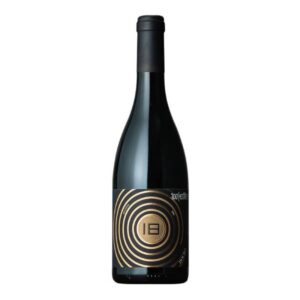Description

The José Maria da Fonseca house is named after its founder, born in 1804 in the village of Vilar Seco, municipality of Nelas, in the heart of the Dão region. Founded in 1834 in Vila Nogueira de Azeitão, it is the oldest producer of Table Wines and Moscatel de Setúbal, remaining in the possession of its descendants to this day.
A man of great vision, José Maria da Fonseca was a pioneer in Portuguese winemaking. The replacement of manual labor with the plow and the widening of the space between the vines for better sun exposure were two innovations widely praised in their time. He is also responsible for the introduction of new varieties in the region, such as Castelão Francês, which he brought from Estremadura, as well as substantial improvements in Moscatel de Setúbal.
In 1857, D. Pedro V confers the Order of the Tower and Sword of Valor, Loyalty and Merit on José Maria da Fonseca. At the time of his death, in 1887, the company had prestigious brands recognized nationally and internationally, and its products were exported to all continents.
António Porto Soares Franco, representative of the fifth generation of the family and winemaker graduated in Montpellier, is responsible for the emergence of two rosé wines that represent two major brands produced by José Maria da Fonseca: Faísca and Lancers. The latter, launched in the United States in 1944, remains the outstanding leader of Portuguese wines imported and consumed in that country.
The introduction of the first highly successful white wine on the national market came in 1945 with the Branco Seco Especial (BSE) and, a decade later, in 1959, the Terras Altas brand was launched with wines from Dão. Pasmados wines, initially known as Branco Velho and Tinto Velho, acquired their own identity in 1959.
From 1969 onwards, the Palmela Superior brand gave rise to Camarate Clarete, Camarate and, from 1985, Quinta de Camarate wines. Finally, in 1945 the production of cellar wines began, identified by secret acronyms that make them authentic collectors' objects: P, DA, AE, CB, EV, they are the first in a long series of more than twenty cellars of different origins that confer José Maria da Fonseca has a notable reputation in the production of this type of wine.
The purchase in 1986 of Casa Agrícola José de Sousa Rosado Fernandes, in Reguengos, expanded the range of Quinta Wines from José Maria da Fonseca, with José de Sousa currently being the only Portuguese wine produced in clay pots.
The growth in sales of Periquita, with a very strong presence in foreign markets, BSE and Moscatel de Setúbal and, in terms of small productions, the success of José de Sousa, D'Avillez, and the three CO cellar wines, TE and RA confirm José Maria da Fonseca's commitment to developing a portfolio of quality products.
From 1995 onwards, new wines such as Periquita Clássico, Primum and Colecção Privada, gave José Maria da Fonseca a certain harmony between the strength of tradition and creativity around new wines appealing to new consumption trends.
José Maria da Fonseca is currently in possession of the sixth generation of its direct descendants, since António Soares Franco assumed the presidency in 1986 and his brother Domingos, graduated in Enology from the University of Davis, in California, ensures the viticulture and creates a very unique and personalized style of the wines that characterize the house.
In April 1996, JM da Fonseca Internacional Vinhos and the Lancers brand were acquired from the British group IDV, making José Maria da Fonseca the largest company in the sector owned by exclusively Portuguese capital.
That same year, the company obtained recognition, from IPQ, for the quality of its production and bottling process according to the ISO 9002 standard, being the first table wine producer to receive such distinction.
The growth strategy also involves a significant increase in the vineyard area, and consequently an increase in own production in total sales. At the end of this century, José Maria da Fonseca owns 600 hectares of vineyards, 500 of which are on the Setúbal Peninsula and the rest in Alentejo. To these must be added 150 hectares of management on behalf of third parties.





